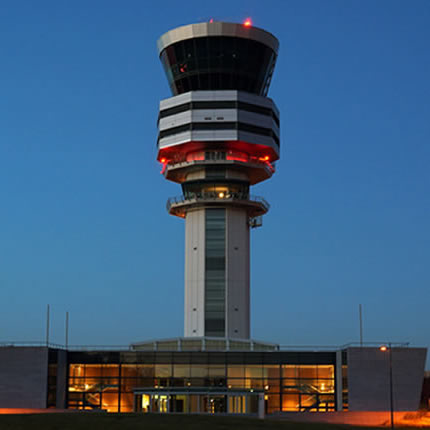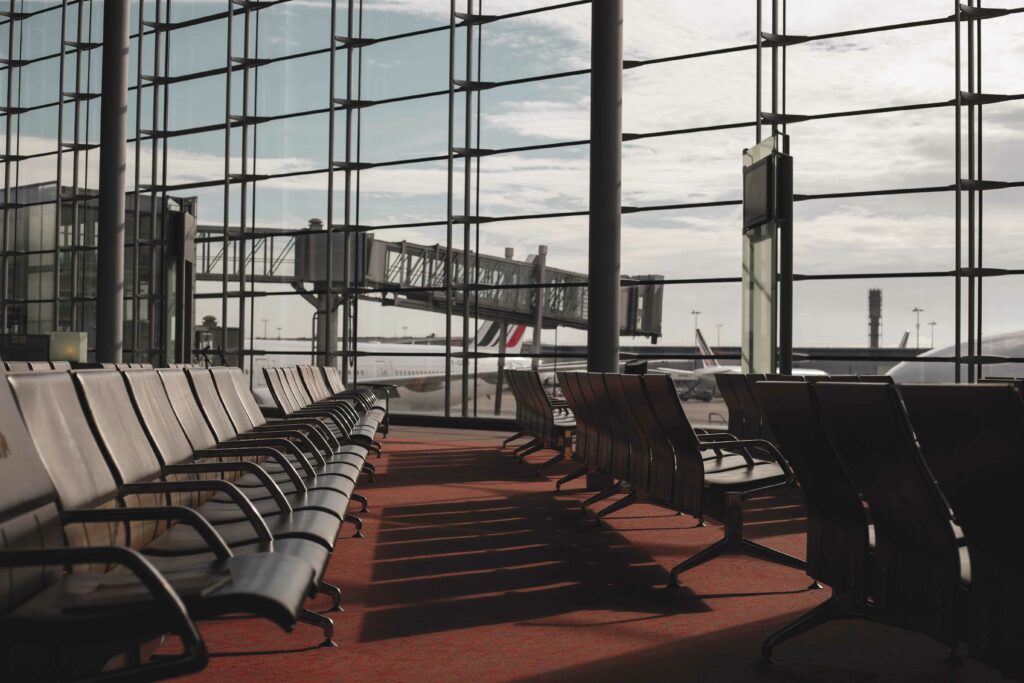Air Traffic Management (ATM) is one of the world’s most complex networks. FSR Transport regularly discusses the issues of ATM at the Florence Air Forums, generally within the context of the so-called Single European Sky (SES). Continuing this debate, FSR Transport has organized a global discussion session at the Madrid World ATM Congress. Stakeholders from around the globe presented their experiences with their respective ATM reform processes.
Roundtable 1. The Industry view: how should air traffic be managed in the future and what are the prerequisites to make it happen?
Neil Planzer, Boeing, representing the airline manufactures perspective, underlined the sophistication of modern aircrafts: their technology is capable of far more than what ATM currently allows them to actually use. The growth of the aviation sector is remarkable and is currently mainly taking place in Asia. To cater for these new demands ATM systems need to improve.
Luc Lallouette, Thales, representing the perspective of an ATM manufacturer, highlighted the efforts made by the industry in the past. The main technical challenge to date is still to establish connectivity between airborne and ground infrastructures. While new technology is largely available, Air Navigation Service Providers (ANSPs) have not been keen enough to implement it. Therefore, he stressed that collaboration is the key component to make a breakthrough in the complex ATM industry.
Francis Schubert, Skyguide, representing such an ANSP, outlined the shared services approach that is guiding Skyguide. The vision is to source ATM-data from centralized data centres and, by doing so, reduce cost and increase flexibility. He identified three key challenges to this, namely a change in mindset focussing on services rather than equipment, a change in state’s attitude towards sovereignty issues, and an increased attention to cyber security.
Roundtable 2. The ATM view: what are the experiences and how can we address the challenges?
Frank Brenner, Eurocontrol, reminded the audience of the capacity crunch European air traffic was facing in the 80s: as a response central flow management and European capacity management were created at Eurocontrol at the time and later extended by making Eurocontrol the network manager. Along these lines, the next future step should actually be a global flow management system: the hurdles such an endeavour would have to overcome would be quite similar to those which were already successfully overcome within Europe when central flow management and the network manager were created.
Elizabeth Ray, FAA, presented the move to proactive safety management and collaboration. Indeed, new approaches are needed when facing new challenges such as drones. In addition, FAA wants to continue working on data and data safety. It is, however, important to always have an eye on ATM staff and work with them.
Thabani Mthiyane, ATNS (South Africa), argued that the South African perspective included almost all of Africa, as air traffic into South Africa needs to securely fly over large parts of the continent. He presented an initiative that was taken in order to facilitate more flights in and out of South Africa. He recalled that not congestion but safety is the main challenge there.
Ed Sims, Airways New Zealand (ANZ), offered yet another perspective. As an ANSP covering a large airspace with little congestion ANZ is focussing on improving efficiency in the interest of airspace users. As a fully corporatized business, ANZ takes a forward looking innovative approach, with the customer, i.e., the airlines, at its center.
Conclusions: What did we learn?
Today the ATM industry (Air Traffic Controllers, Suppliers, Airplane manufacturers) is a huge global industrial and technological complex. It is well known that technological reforms take a long time to be implemented, especially if systems have to be thoroughly tested for their safety. Furthermore, the system requires modernisation to be synchronized between ground and airborne equipment. In addition, personnel, both pilots and air traffic controllers, need to be trained for the use of the new technologies. The biggest obstacle to more efficient air traffic management today is however a different one: naturally and as enshrined in the Chicago Convention[1] air traffic control is the prerogative of the national state, and many see it as an essential element of states’ sovereignty. Governments, ANSPs and most importantly the air traffic controllers need to support reforms and can dictate the speed of the reform process. In an increasingly globalized world, this constellation results in the fragmentation of airspace (and also of technology) along national borders whereas growing traffic volumes would urgently require a more harmonized, ideally a global, system. The technology to make this a reality is overall available. Whereas the tedious political battles on the Single European Sky have been extensively discussed also in the past, discussions in Madrid added two main innovative considerations: firstly the potential of disruptive technologies and secondly the look beyond Europe.
Disruptive Technologies
Prior to WW2, air traffic control had not existed and the safe navigation of airplanes had been the sole responsibility of the airlines. Air traffic control for civil aviation started with the need to avoid mid-air collisions. Today, technologies exist that would, at least in theory, allow to go back to devolving responsibilities to the airplanes without making air traffic any less safe: thanks to satellite navigation and improved communication tools, airplanes could essentially separate themselves from each other. The reality is however far from even discussing such a scenario[2]. Yet, airlines and airplane manufacturers have, in the past, significantly invested in new on-board equipment which, however, remains underutilized as the air traffic control system on the ground is not adjusted accordingly. The growing capabilities of these underutilized technologies may soon have a disruptive effect on the entire ATM industry.
Africa can learn from Europe– how not to do it
The American NextGEN and the European SESAR programs receive a lot of attention in the discussion on the future of ATM, mainly because of the many billions that were invested in them.
In spite of being a strong growth region for air transport, the state of ground infrastructure in Africa is still overall very poor. In fact, over large parts of the continent a functioning surveillance from the ground is not (yet) in place. Major funds to build up such infrastructure are not available, even though given the prospective growth, investments could, in theory, offer a good return. It therefore comes naturally for the forerunner, South Africa, to focus on one thing to improve this situation, i.e., regional cooperation. Large-scale regional cooperation, together with ICAO, will have the potential to make use of new technologies so as to make air travel in Africa safer and thereby also allow for higher growth rates. Such cooperation faces, however, many challenges, most importantly perhaps the coordination with the military. If one thing can be learned from Europe’s experience with the Single European Sky (and the SESAR program), it is that money cannot overcome the problems of institutional fragmentation and political divisiveness; functioning cooperation remains essential for modernizing ATM.
[2] However, the emergence of drones may push forward automated detection and avoidance systems and eventually disrupt the ATM system. See the European Transport Regulation Observer on “Regulating Drones”






